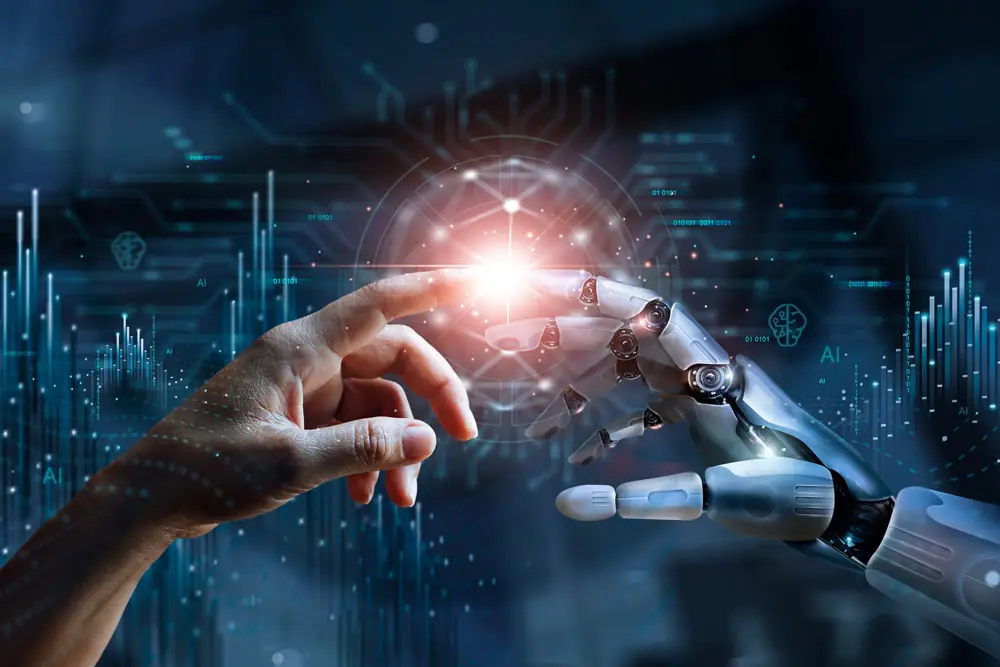Discover the ethical debate surrounding artificial intelligence: between good and evil. Learn how AI is transforming the world for better and worse.
The Ethical Dilemma of AI

The Dual Nature of Artificial Intelligence
Artificial Intelligence (AI) is one of the most revolutionary technologies of the modern era. It is reshaping industries, enhancing efficiency, and even improving healthcare. However, with its rapid advancements come concerns about ethical implications, job displacement, misinformation, and even potential existential threats.
But where does AI stand between good and evil? Is it a force for progress or a dangerous tool that could spiral out of control? In this article, we will explore the ethical dilemma of artificial intelligence, its benefits, risks, and how we can navigate its future responsibly.
The Good Side of Artificial Intelligence
1. AI in Healthcare – Saving Lives and Enhancing Medicine
One of AI’s greatest contributions is in healthcare, where it is revolutionizing diagnosis, treatment, and patient care.
How AI Is Improving Healthcare
Early Disease Detection – AI can analyze medical scans faster than doctors, detecting diseases like cancer at early stages.
Personalized Medicine – AI tailors treatments based on genetic profiles.
Robotic Surgeries – AI-assisted robots perform precise, minimally invasive procedures.
With AI’s ability to process vast amounts of data, it is helping researchers develop new drugs faster, improving global healthcare systems.
2. AI in Business and Productivity
AI-driven automation is making businesses more efficient, reducing human error, and enhancing decision-making.
How AI Benefits Businesses
Automating Repetitive Tasks – AI chatbots, virtual assistants, and data analysis tools improve efficiency.
Better Customer Service – AI personalizes experiences and provides instant support.
Smart Predictions – AI-powered analytics help businesses forecast market trends and make data-driven decisions.
Companies using AI see increased productivity and reduced costs, making them more competitive in the digital era.
3. AI in Education – A Smarter Way to Learn
AI is transforming education by personalizing learning experiences and making knowledge more accessible.
The Role of AI in Learning
Adaptive Learning Platforms – AI customizes lessons based on student performance.
Automated Grading and Feedback – Saves time for educators and helps students improve faster.
Breaking Language Barriers – AI-powered translation tools make education global.
With AI-driven education, students can learn at their own pace and receive tailored support to maximize their potential.
The Dark Side of Artificial Intelligence
1. AI and Job Displacement – The Future of Work
While AI boosts efficiency, it also threatens millions of jobs by automating tasks once performed by humans.
Industries Most Affected by AI Automation
Manufacturing – Robots are replacing human workers in factories.
Customer Service – AI chatbots reduce the need for human representatives.
Content Creation – AI-generated articles and art raise concerns about job security for creatives.
The challenge lies in retraining workers for new opportunities in an AI-driven world.
2. AI and Misinformation – The Rise of Deepfakes and Fake News
AI is also being used maliciously to spread misinformation, manipulate public opinion, and create highly realistic deepfakes.
How AI Contributes to Misinformation
Fake News Generation – AI algorithms can produce misleading articles.
Deepfake Videos – AI-created videos can impersonate real people.
Social Media Manipulation – AI-driven bots spread false narratives.
If left unchecked, AI-powered misinformation can threaten democracy and trust in media.

3. AI and Ethical Concerns – Bias and Privacy Issues
AI is only as unbiased as the data it is trained on, leading to potential ethical dilemmas.
The Ethical Risks of AI
Algorithmic Bias – AI can unintentionally discriminate against minorities.
Privacy Violations – AI-powered surveillance raises concerns about data security.
Lack of Transparency – AI decisions are often unexplainable and unregulated.
Governments and companies must ensure that AI is developed and used ethically to avoid these dangers.
AI Between Good and Evil – How Can We Balance It?
1. Developing Ethical AI Regulations
To ensure AI is used responsibly, clear ethical guidelines and regulations must be established.
Key Areas for AI Regulation
Transparency – AI decision-making should be explainable.
Fairness – AI must not reinforce discrimination.
Privacy Protection – Strong data security measures are needed.
Countries and tech companies are now working on AI governance frameworks to mitigate risks.
2. Human-AI Collaboration – Finding the Balance
Instead of replacing humans, AI should complement and enhance human capabilities.
How to Use AI Responsibly
AI-Assisted Jobs – Training workers to use AI as a tool, not a replacement.
Human Oversight in AI Decisions – Ensuring AI does not act autonomously in critical situations.
Educating Society About AI Risks – Raising awareness of ethical AI use.
A balanced approach can maximize AI’s benefits while minimizing harm.
The Future of Artificial Intelligence – A Hopeful or Dangerous Path?
1. AI and Superintelligence – The Existential Risk Debate
Some experts warn about the dangers of AI surpassing human intelligence.
Possible Future Scenarios
AI as a Tool – Continues to assist humans without autonomy.
AI as a Partner – Works alongside humans, making independent yet ethical decisions.
AI as a Threat – Becomes uncontrollable, posing risks to humanity.
AI safety research is crucial to ensure responsible advancements in artificial intelligence.
2. How Society Can Shape AI’s Future
The responsibility for AI’s direction falls on policymakers, developers, and users.
Actions to Ensure AI Benefits Humanity
Support Ethical AI Policies – Encourage laws that promote responsible AI use.
Invest in AI Education – Teach future generations about AI’s benefits and risks.
Encourage AI for Good – Support projects that use AI for sustainability, healthcare, and human rights.
By taking action today, we can ensure AI remains a force for good.
Conclusion: Artificial Intelligence – A Tool for Good or Evil?
AI is neither inherently good nor evil—it is a tool shaped by how we choose to develop and use it. While it has the potential to improve healthcare, business, and education, it also poses risks of job displacement, misinformation, and ethical concerns.
The key lies in responsible AI development and regulation, ensuring that artificial intelligence serves humanity rather than threatens it.
The future of AI is in our hands. Will we use it wisely?
Artificial Intelligence: Between Good and Evil – How Will Relationships Be in a World Completely Dependent on Screens?



